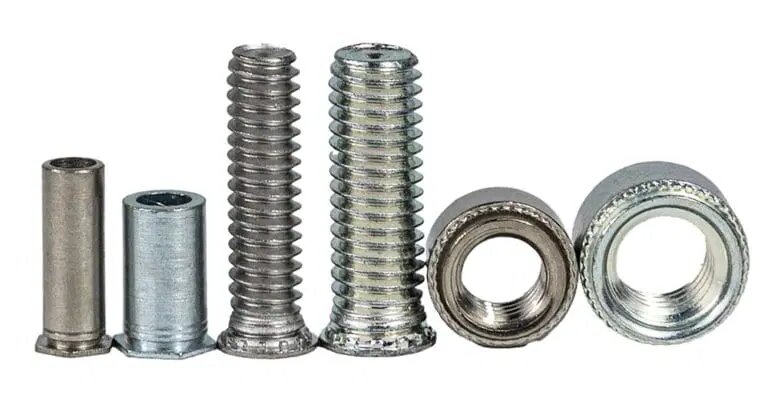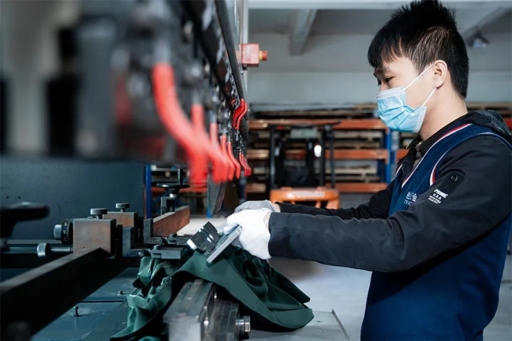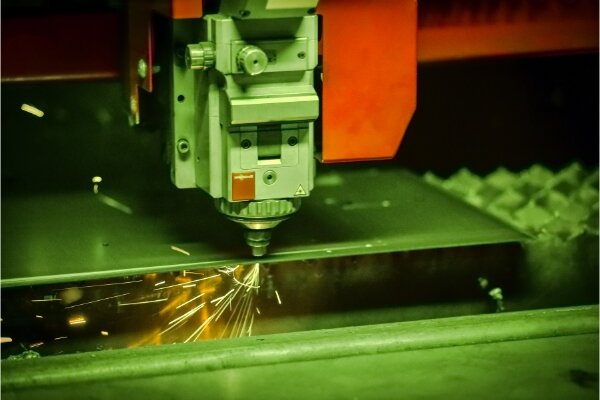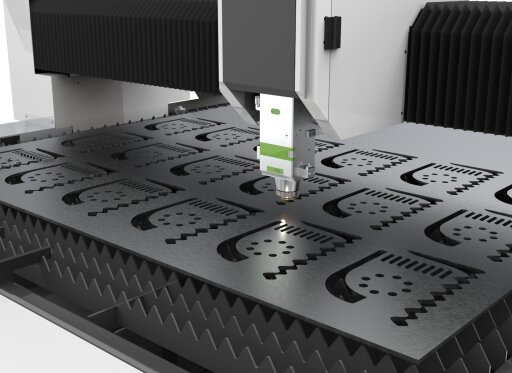Sheet metal hardware problems may seem small, but they often cause the most significant delays on the production floor. A loose screw, a stripped thread, or a misaligned insert can stop an entire assembly line. For engineers and production teams, these issues are hidden problems that waste hours and increase costs.
Addressing hardware issues promptly makes the assembly process smoother and more predictable. Next, we will examine the common causes and practical solutions.
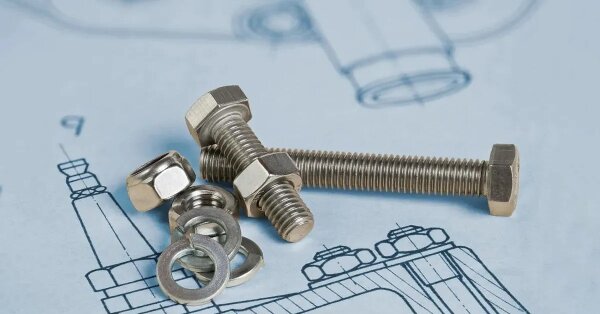
Understanding Material Compatibility
Material compatibility plays a key role in strength, corrosion resistance, and long-term reliability. Engineers must consider how each metal reacts under various conditions, including temperature changes, moisture, and chemical exposure.
The Galvanic Corrosion Problem
Galvanic corrosion occurs when two different metals come into contact with each other in the presence of an electrolyte, such as water or humidity. One metal acts as the anode and corrodes more rapidly, while the other acts as the cathode and remains protected. This often occurs around fasteners, rivets, or threaded inserts that are made from a different metal than the sheet material.
For example, a steel screw in an aluminum panel can cause rapid corrosion at the joint. The aluminum deteriorates first, which can lead to loose connections or surface damage. The risk increases in outdoor or marine environments where moisture is constant. To prevent this, designers should pair metals with similar electrochemical properties or use protective coatings and isolating washers.
Managing Thermal Expansion
Metal parts expand and contract with temperature changes. When different metals in a single assembly expand at different rates, stress accumulates at the joints. Over time, this can cause warping, cracking, or loosening of مهمات الربط.
For instance, stainless steel and aluminum expand at different rates. If an aluminum panel is attached to a steel frame, the aluminum will expand more when heated than the steel frame. This can distort the structure or misalign holes and hardware.
To address this, engineers should consider temperature effects in the design stage. Allowing slight movement between parts, using slotted holes, or choosing metals with similar expansion rates helps prevent damage. Thermal simulations and testing can confirm whether the assembly will remain stable under operating temperatures.
Designing for Manufacturability and Assembly
A well-thought-out design makes manufacturing smoother and assembly faster. Considering how a part will be made and assembled from the start can save both time and money.
Hole Sizing and Tolerances
Correct hole sizing is crucial for reliable hardware installation. If a hole is too tight, hardware can deform or fail during press-fit. If it’s too loose, inserts may spin or fall out during use. Getting the balance right requires understanding both the hardware specifications and the material’s behavior.
Materials react differently under stress. For example, aluminum, being softer, often requires tighter tolerances, while stainless steel, being harder, may require 0.05–0.1 mm more clearance. Tool wear also affects hole size—studies show that after 1,000 drilling cycles, the hole diameter can drift by up to 0.02 mm in high-speed production.
Hardware manufacturers often provide dimensional guidelines. Self-clinching nuts, for example, require pilot holes within ±0.05 mm of the recommended size to achieve full thread strength. Using pilot holes and reaming for critical dimensions improves accuracy and repeatability in production.
Clearance and Access Considerations
Even correctly sized holes can fail if tools cannot reach them. Hardware must be accessible for pressing, tightening, or inspection, without interference from flanges, bends, or nearby components. Engineers should visualize how a tool or press will approach the part during assembly.
For example, a self-clinching nut positioned less than 3 mm from a bend edge can prevent proper press alignment, resulting in uneven pressure or damage. Allowing at least 5–10 mm of clearance generally ensures smooth tool access, depending on the press or driver used.
Assembly sequence also matters. Some hardware must be installed before folding or welding, while other parts can be added afterward. Clear access points not only simplify assembly but also make maintenance easier. Using 3D modeling to simulate tool paths and installation angles can detect interference early, avoiding costly production issues.
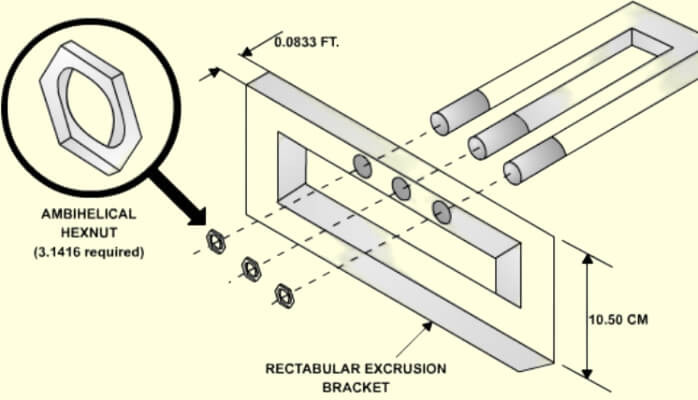
Mastering Torque and Clamp Force
Torque rotates the fastener, but clamp force holds the parts together. Applying the correct torque is key to a secure assembly. Proper torque maintains the joint’s tightness without damaging components.
The Dangers of Over- and Under-Tightening
Over-tightening stretches or damages fasteners, especially in softer metals like aluminum. Threads can strip or crack, making it impossible to maintain proper clamp force. In severe cases, the fastener head may break off, requiring costly repairs. Over-tightening can also distort thin sheet metal, resulting in uneven surfaces or gaps.
Under-tightening leaves joints loose. Vibration or thermal expansion can gradually loosen fasteners over time. Once movement starts, holes wear out, and inserts may rotate or fall out of place. For example, electrical enclosures or chassis exposed to vibration can develop rattling, noise, or lose proper grounding.
Both issues are preventable with accurate torque control. Torque-controlled tools and verified settings are used before each production run to maintain consistency. Recording torque data supports quality control and traceability.
Best Practices for Consistent Torque Application
Using the right tools is essential. Torque wrenches, screwdrivers, or pneumatic drivers should be calibrated and matched to the specific type of hardware. For press-fit or self-clinching components, force-monitoring presses ensure consistent seating pressure every time.
Clean surfaces matter. Dirt, oil, or oxidation can change thread friction and affect torque readings. Wiping parts before assembly reduces this variation.
For assemblies with multiple fasteners, tighten in stages. Gradually increasing torque in a cross pattern distributes pressure evenly and prevents distortion. This is especially important for covers, panels, and parts with gaskets.
Lubrication can also affect clamp force. Some fasteners need a light coating of oil or anti-seize compound. Without it, friction absorbs torque energy and reduces joint tension. Always follow the hardware supplier’s guidelines for lubrication and tightening sequence.
Ensuring Proper Alignment and Fit
Parts must line up precisely for smooth assembly. Misalignment causes stress, binds threads, and weakens joints. Ensuring proper alignment is crucial for producing a high-quality product.
Jigs and Fixtures for Precision
Jigs and fixtures help maintain accuracy during hardware installation. They hold parts steady, guide tools, and ensure holes and inserts line up exactly as designed. Even small movements during pressing or fastening can create alignment problems and affect quality later.
A good fixture supports the part at all critical points while allowing easy access to tools and equipment. It should account for part thickness and bending tolerances. Locating pins and reference surfaces helps operators position each piece consistently and accurately. Repeatable positioning is crucial for high-volume production or when tight tolerances are required.
For prototypes or small runs, modular fixtures can be quickly adjusted to accommodate different part sizes. Features such as quick clamps or magnetic bases enhance efficiency and reduce operator fatigue.
Techniques for Dealing with Misaligned Holes
Misaligned holes can still occur due to tool wear, thermal distortion, or slight design variations. Forcing hardware into place can damage threads and inserts, so careful correction is key.
Reamers or precision drills can slightly adjust the hole size or position while maintaining a round hole within tolerance. Slotted holes enable minor adjustments without compromising the part’s integrity.
Shims and spacers can correct minor height or angle differences between mating surfaces, helping hardware seat properly. For larger assemblies, alignment pins or temporary guide bolts can be used to position the parts before final tightening.
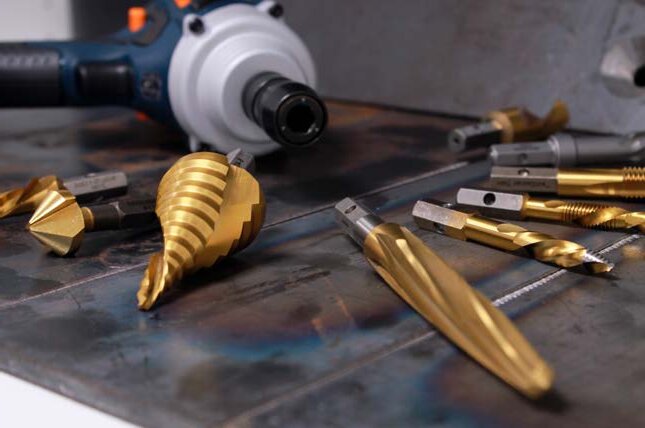
Preventing Galling and Seizure
Galling begins when frictional heat builds up between the fastener threads. As the surfaces rub, tiny high points weld together. Continued tightening tears these spots apart, leaving rough, distorted threads. This can lock the fastener in place or strip threads completely during removal.
Galling often occurs when the same metal grade is used for both fastener and mating part—for example, stainless steel bolts in stainless steel panels. High pressure, rapid tightening, and lack of lubrication make galling almost unavoidable. Dirty or damaged threads further increase the risk.
Lubrication is one of the simplest and most effective ways to prevent galling. A thin layer reduces friction, keeps surfaces cool, and prevents direct metal-to-metal contact.
Coatings provide longer-term protection. Electroplated finishes, such as zinc or nickel, lower friction and add corrosion resistance. For stainless steel, thin chromium nitride coatings or passivation treatments reduce the risk of cold welding during tightening.
How to Select the Best Hardware?
Selecting the proper hardware involves more than just picking bolts and nuts from a catalog. The right choice ensures strong, reliable connections, reduces assembly problems, and keeps your products performing well over time.
Match the Load Requirements
Every fastener has a load limit. Using hardware that is too weak can lead to joint failure, while over-specifying adds unnecessary cost. Consider all forces the assembly will face, including tension, shear, vibration, and impact.
For instance, a thin aluminum panel supporting a heavy bracket needs inserts or bolts that handle both static and dynamic loads. Self-clinching studs, threaded inserts, or high-strength screws may be required depending on the material and thickness. Understanding the load helps ensure the hardware stays secure without damaging the sheet metal.
Consider the Operating Environment
Environmental factors, including moisture, temperature, chemicals, and UV exposure, can impact hardware performance. Stainless steel performs well in humid or corrosive conditions, while zinc-plated or coated fasteners work for less harsh environments.
For outdoor or industrial applications, corrosion-resistant hardware prevents rust and thread wear. In high-temperature conditions, fasteners must retain strength without galling or softening. Planning for these conditions early avoids premature failures and costly maintenance.
Plan for Assembly and Maintenance
Hardware selection should also consider how parts will be assembled and maintained. Fasteners that are hard to reach or need special tools can slow production and complicate service.
Think about clearance for torque tools, press-fit heads, or screwdrivers. Consider whether the joint may need periodic tightening or replacement. Choosing hardware that is easy to install and service reduces errors, speeds up assembly, and extends the product’s life.
Ready to simplify your sheet metal projects? Share your drawings with us today. Our team will review them, offer practical solutions, provide accurate quotes, and guide you through a fast production process. Contact us now to start making parts that fit perfectly and perform reliably.
مهلا، أنا كيفن لي

على مدى السنوات العشر الماضية، كنت منغمسًا في أشكال مختلفة من تصنيع الصفائح المعدنية، وشاركت رؤى رائعة هنا من تجاربي عبر ورش العمل المتنوعة.
ابقى على تواصل

كيفن لي
لدي أكثر من عشر سنوات من الخبرة المهنية في تصنيع الصفائح المعدنية، وتخصصت في القطع بالليزر، والثني، واللحام، وتقنيات معالجة الأسطح. كمدير فني في شنغن، أنا ملتزم بحل تحديات التصنيع المعقدة ودفع الابتكار والجودة في كل مشروع.

